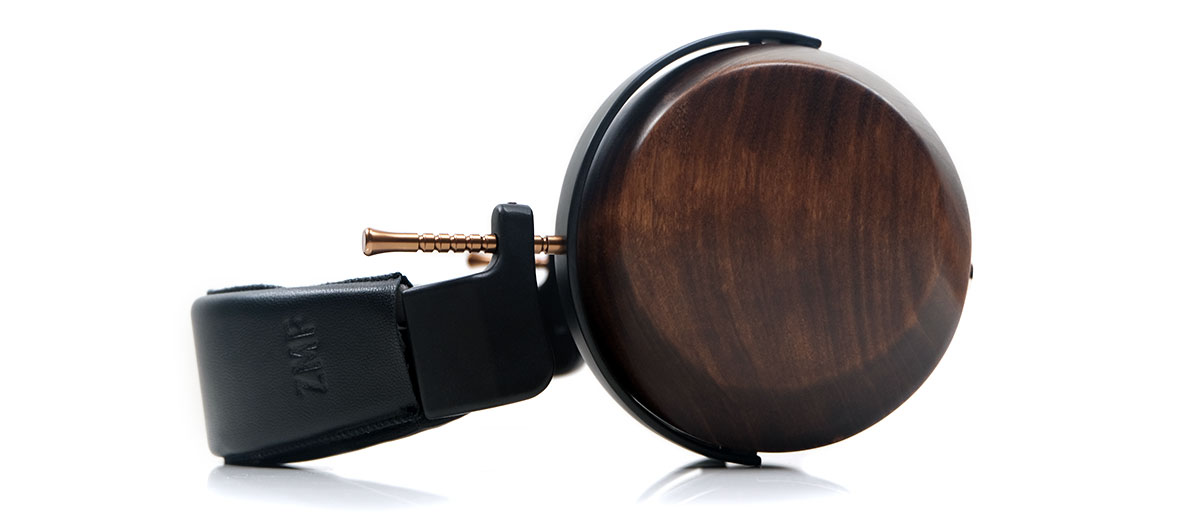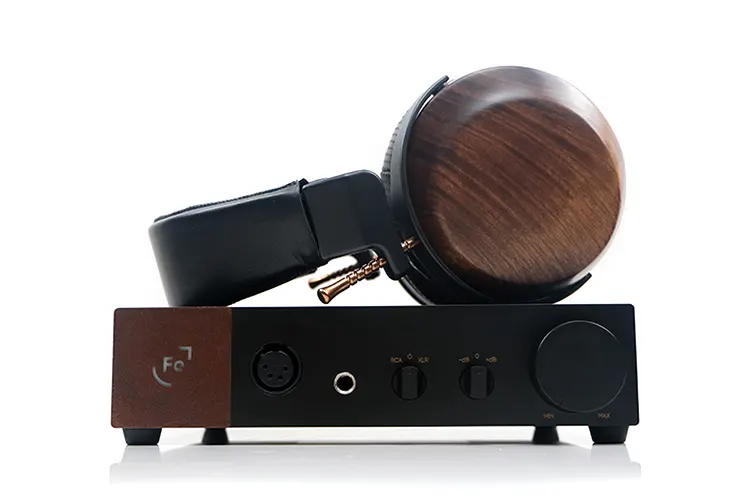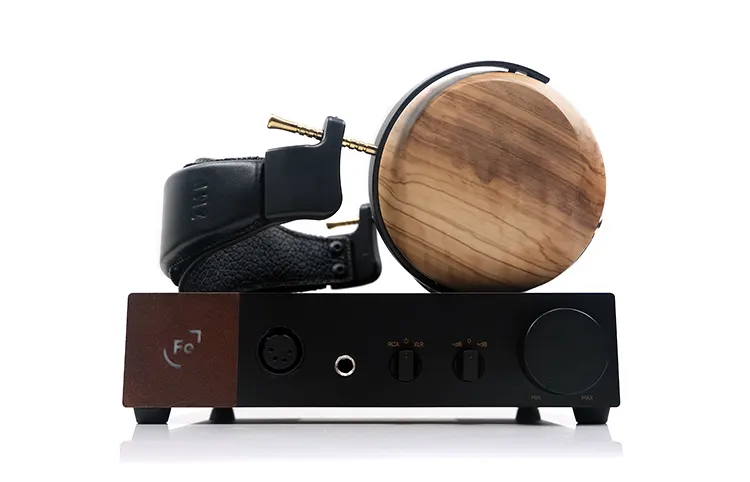Sound Impressions
The following impressions were compiled using a combination of the Ferrum OOR/HYPSOS and the Cayin HA-300MK2 SET as the main amplifiers with a Cayin N7 and a Holo Audio Spring May 2 Wildism Edition as DACs.
Summary
The stock ZMF Headphones Atrium Closed setup is the deeper and more powerful-sounding sibling of the original open-back version. It stages a bit tighter and more intimate than the Atrium Open but in the context of closed headphones generally, it’s impressively spacious and open in its delivery.
Of course, you have two options for the Atrium Closed in the softer cherry wood and the harder Italian Olivewood. To my ears, they offer different sound signatures that might split the audience a little.
This is a case of two different levels of energy with the Olivewood giving you more of a rush of adrenaline and the Cherry wood switching it closer to the Atrium Open’s smoother embrace.
The Cherry wood is the lusher more euphonic tuning with a deep but diffused and almost atmospheric sub-bass response and increased reverb. The Olivewood has a more impactful and upfront bass delivery with a heightened sense of speed and tighter levels of decay.
Both headphones image extremely well with excellent dynamic headroom from a good-quality amplifier. However, there is an immediacy difference with the Olivewood giving you a little more intimacy and energy in the presence region with vocals energy heightened.
I described the difference on page 3 of this review as akin to using a solid-state amplifier for the Olivewood and switching over to a SET tube amplifier for the cherry wood edition in the way it dials back on the aggression and ups the atmospheric quality to its performance.
Can you tweak the presentation? Yes, you can with the thin suede pads which dampen down on the bass quantity a little more and conversely increase the treble presence giving the Atrium Closed an airier but slightly brighter tone.
Frequency Response
If you are coming from the Atrium Open you are going to find everything south of around 500Hz to be increasingly elevated though not overdone, more of an elongated rise and fall from 20Hz to 500Hz with a stronger emphasis in the sub-bass around 40Hz to 60Hz.
The Atrium Open tended to fall away in this area and lacks the same sub-bass support or presence sounding a little less planted for me on notes that require a stronger underlying fundamental.
Not so with the Atrium Closed which generates a lot more bass solidity though with a mid-bass that slightly falls away it’s not as punchy in the cherry wood stock compared to the Olivewood LTD which seems to generate a little more energy in the same region.
From 100Hz down to 1k, the Atrium Close is on a gentle downward slide into the midrange so the bass-to-mids separation is really good for a closed-back headphone with less of the dreaded closed-cup resonance that I would have expected.
From there the Atrium Closed gets a 2-4k bump that helps balance out the two key areas for my tastes, bass and vocal presence.
Just to note the Atrium Closed has two distinct nodes around 4k and again around 8k with a flatter 5-7k band that helps give the midrange notes a little more definition and sheen compared to the Atrium Open which sounds comparatively softer over the same frequency range.
Timbre
The stock Atrium Closed Cherry Wood sound is not a huge deviation from the Atrium Open but there are some changes. It still offers a smooth coloration with a slightly elongated note decay and generally a non-aggressive presentation.
Yes, the bass amplitude is much higher so note fundamentals will have some pleasing solidity to them over the Atrium Open’s more conservative bass tuning.
However, it is not the punchiest closed-back you will ever hear. The LTD version does much better in this regard so if you need the urgency and enhanced slam I would pick that over the cherry wood alternative. This version presented body and volume but more diffused with heightened levels of note decay.
This tuning is voluptuous but at the same time relaxed in its delivery with nothing over-emphasized save for some tiny peaking in the upper mids and around 8k in the treble. Those bumps give the Atrium Closed’s mid-coloration a bit more sparkle and sweetness compared to the open-back’s richer and warmer midrange overtones.
Changing to the thin suede pads will alter the balance and coloration with a tighter bass response, a slightly lighter but more focused midrange presence, and more treble sparkle and perceived extension.
Staging & Dynamics
Whilst you will perceive some reduction in the expanse and complexity of the soundstage relative to the open-back version, the overall soundstage size of the Atrium Closed is very impressive.
You will get a lot more depth and power over the original though the relative width is narrower and overall headroom is reduced just a little. That being said the energy on the highs is slightly higher with more elevation around 8k to tease out some additional sparkle compared to the open-back.
There are some variations though depending on the version you buy and your system setup.
For a start, the LTD version images a little closer to my ears with a more aggressive and forward bass response and a vocal image that’s more prominent compared to the stock Cherry Wood version.
Second, switching to the suede pads amplified the highs a bit more and reduced the low-end power rendering a taller quality to the staging compared to the thin leather pads which will keep your ear a bit more focused on the lows and 2-4k region.
That often affected my choice of the amplifier paired with the Cherry Wood thin suede pad combo sounding at its airiest and most holographic with the Cayin HA-300MK2, a similar experience I had with the Atrium Open.
However, with the Olivewood LTD version, I wanted something snappy and more dynamic on the lows so amplifiers like the solid-state rectified Feliks Audio Envy and the pure solid-state OOR felt like excellent pairings in terms of improved drive and energy.
Synergy
Efficiency
The ZMF Headphones Atrium Closed is the same as the open-back version at a hefty 300Ω and a medium efficiency of 96dB/mW. That should come as no surprise given they both share the same driver.
In terms of volume or loudness, the 96dB/mW SPL rating of the Atrium Closed should not pose too many issues with a wide range of amplifiers. These are not as hard to drive compared to the likes of the HIFIMAN Susvara or the Dan Clark Audio Stealth.
However, my observations regarding amplifier matching relative to driving capability are unchanged from the original Atrium review, i.e., “an amp pairing that is able to deliver enough output voltage to maximize the potential staging headroom and dynamic range” of the Atrium Closed.
Traditionally, SET or tube amplifiers work best with high-impedance headphones though recent solid-state amps such as the Ferrum OOR with its 800mW into 600Ω balanced output capability will provide more than enough power to drive the Atrium Closed very well indeed.
Tube amplifiers such as the Cayin HA-300MK2 and the Feliks Audio Envy also have impedance selectors which will fine-tune the performance to better match the load of the Atrium Closed.
For example, the Feliks Audio Envy “H” setting for high impedance will give you a potential for 5V (RMS) for 600Ω loads with its output impedance climbing up to 20Ω.
Even the older ALO Audio Studio 6 tube amp, one that struggles with current demanding planars, is rated for 8.1V RMS output into 600Ω meaning good dynamic headroom from the Atrium Closed is easily attainable so long as you have a decent level of input voltage from your DAC or phono stage.
Pairings
I tested three amplifiers with the Atrium Closed with different DACs including the Envy, HA-300MK2, and Ferrum’s OOR. Now, with the Open version, it was the HA-300MK2 for me with its holographic prowess a perfect match for the similarly expansive presentation of the Atrium.
However, for the Atrium Closed I found myself split between the Envy and the HA-300MK2 on a 50:50 basis simply because stronger bass is an Atrium Closed calling card.
The Envy will dig out a more robust sub-bass response and you can hear that additional weight right away over the HA-300MK2. The Ferrum OOR will tease out a punchy bass response also from the Atrium Closed but it’s a cooler cleaner tone compared to the more voluptuous Envy pairing.
Paired with the Holo Spring DAC, the HA-300MK2 will give you a sweet midrange timbre from the Atrium Closed and a more spacious holographic presentation.
Switching to a thicker-sounding DAC such as the dCS Bartok Ring DAC will enhance the low-end weight of the HA-300MK2/Atrium Closed pairing but not to the same extent as the Bartok/Envy pairing.
I had the OOR paired with the Ladder Schumann R-2R DAC which is a beefy-sounding DAC in its own right and this did help tease out some nice punch and power from the OOR/Atrium Closed pairing.
However, the stock neutral sound of the OOR did reveal a bit more of the Atrium Closed treble nodes at 4k and 6k so if there is any sharpness in the recording the OOR is going to be the most revealing of the three pairings.
If you want to smooth that out then the Envy and more so the HA-300MK2 will bring in some additional euphony to the Atrium Closed upper mids.




